What Is Competitive Intelligence?
Competitive intelligence is the process of collecting and analyzing data on your competitors, your industry, your potential customers, and market trends to inform important decisions.
It can help you identify opportunities and threats, anticipate market shifts, benchmark performance, and improve things like your positioning and pricing.
Why Is Competitive Intelligence Important to Companies?
We surveyed 100 marketers to find out what they consider to be the most valuable benefit of competitive intelligence. Here’s what they said:
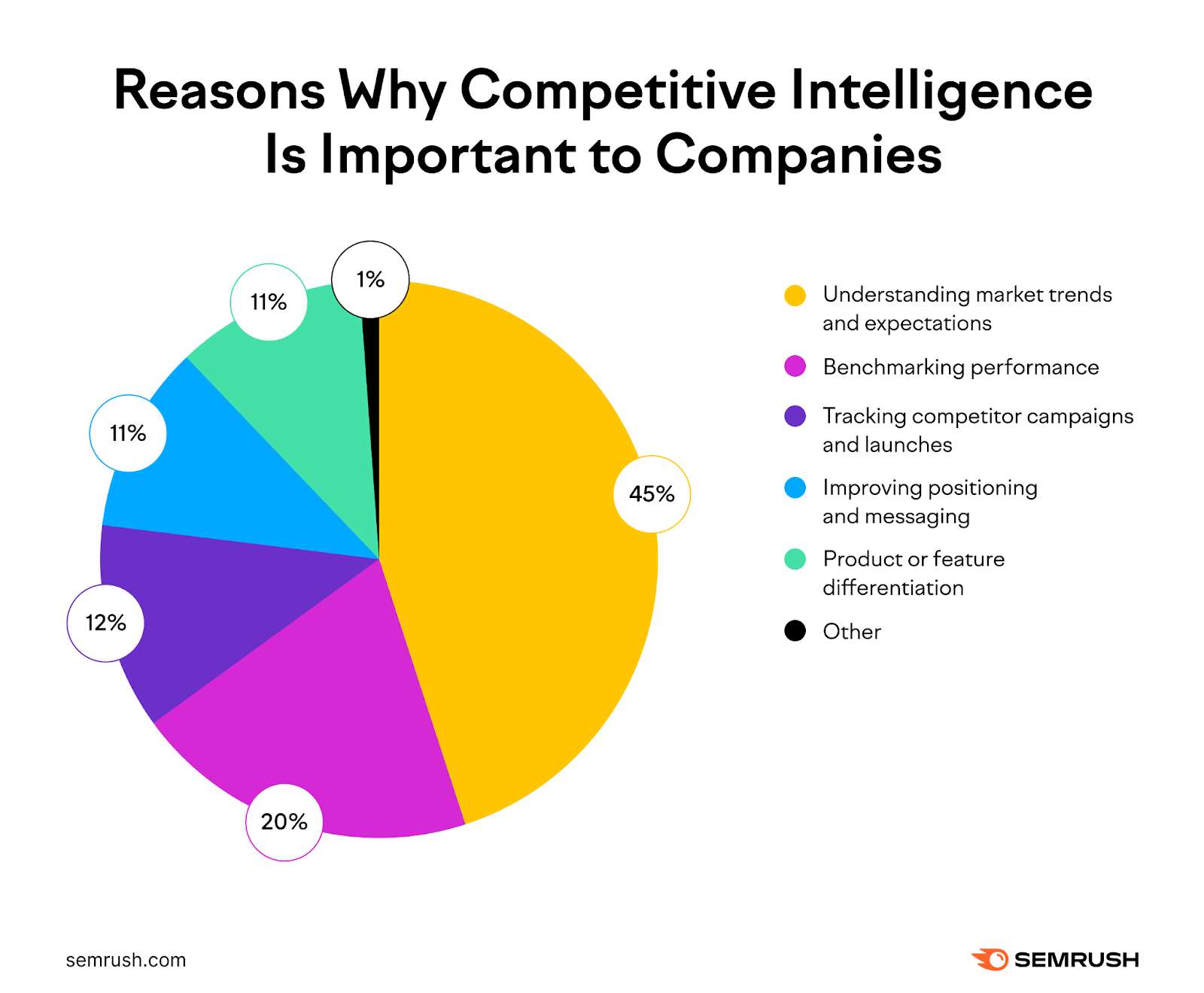
Almost half (45%) of surveyed marketers stated that understanding market trends and customer expectations is the biggest benefit of competitive intelligence.
This makes sense—you can use the knowledge you gain about customers and your overall market to adjust your larger strategy or more specific tactics.
In our poll, 20% of marketers considered the ability to benchmark brand performance against the competition to be the most important benefit of competitive intelligence. Likely because it can help you understand whether you’re falling behind and inform goal-setting.
For 12% of polled marketers, tracking competitor campaigns and launches is what makes competitive intelligence so valuable. It’s clear why—this can help marketers create counter-campaigns and get better results from their marketing efforts.
A great example of using competitive intelligence effectively is Microsoft Teams.
During the COVID pandemic, Zoom’s popularity skyrocketed, largely due to the software’s ease of use. At the time, Teams was considered a more complex and business-oriented solution.
To catch up, Teams responded by speeding up the development of user-friendly features such as Together Mode and Dynamic view, which aimed to reduce meeting fatigue and allow for more natural conversations. This was likely influenced by competitive data.
Types of Competitive Intelligence
The two main types of competitive intelligence are strategic and tactical intelligence:
- Strategic intelligence focuses on informing high-level decisions related to market entry, brand positioning, and product development. It involves analyzing industry trends, shifts in consumer behavior, emerging technologies, and regulatory changes.
- Tactical intelligence aims to inform smaller decisions, such as updating landing page copy or determining which product features to develop next. It often includes analyzing competitors’ websites, ad campaigns, and customer reviews.
How to Do Competitive Intelligence Research for Your Business
Ready to get started with competitive intelligence? Follow these steps:
1. Identify Your Top Competitors
Before you can start analyzing your competition, you first need to identify who your top competitors are.
You probably already know some of them. But you can also use Semrush’s Traffic & Market Toolkit to uncover even more competitors.
Here’s how:
Enter your domain and click “Analyze.”
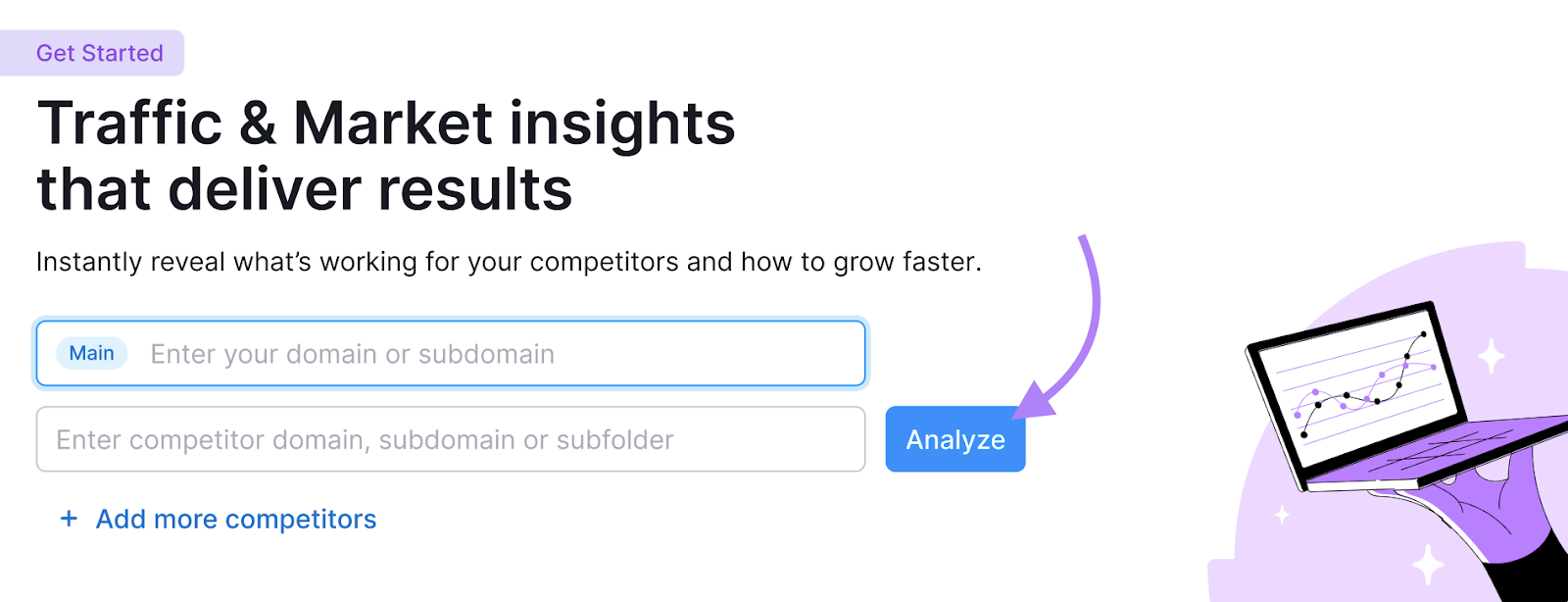
Go to the Market Overview tool and scroll down to the “Market Players” section to see a comprehensive list of competing websites.
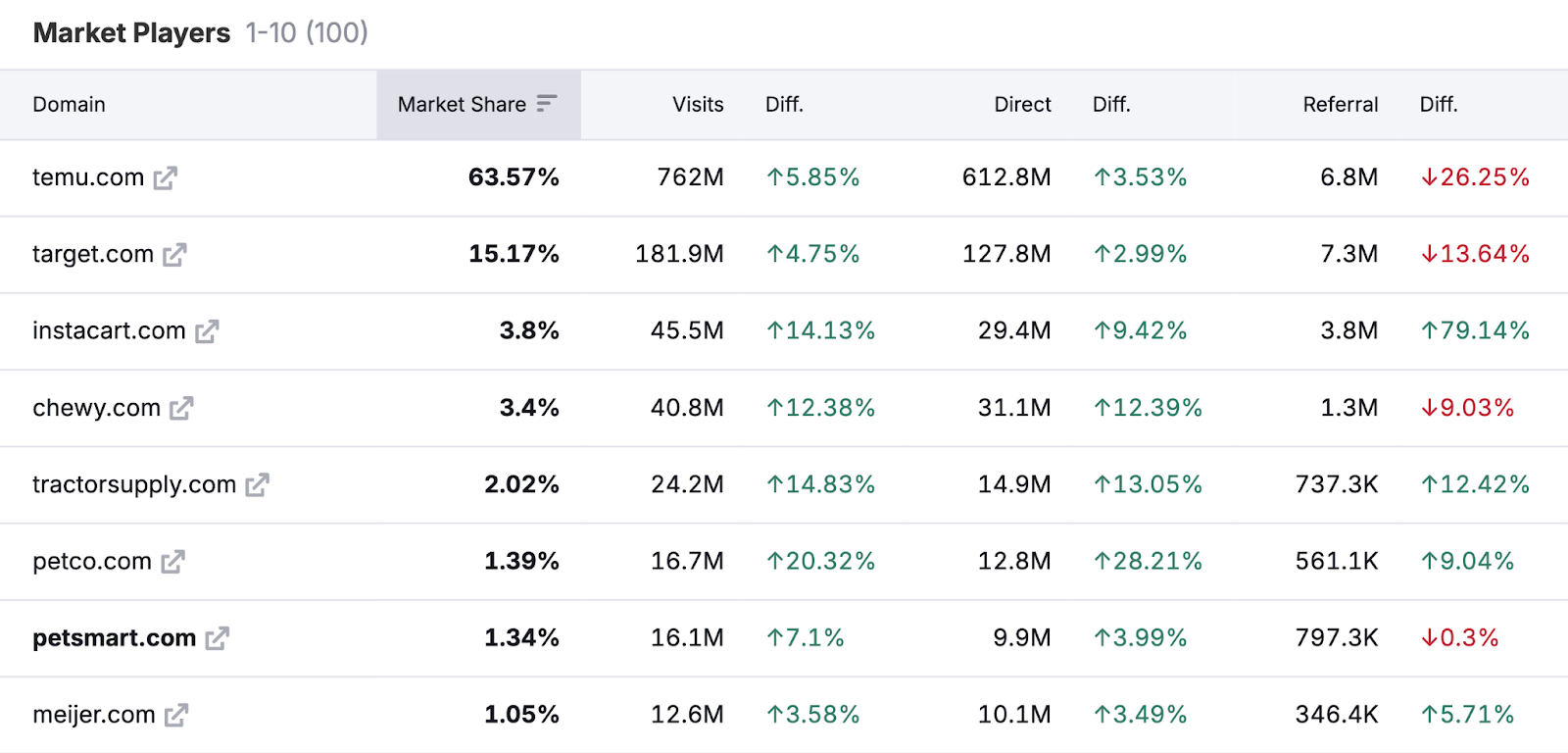
Review the list and choose the top competitors you’re going to focus on for your competitive intelligence project.
2. Gather Data From Multiple Sources
Once you know which competitors you want to track, use multiple sources to collect relevant data on them. Here are a few places you can look:
- Competitor websites: Homepages, as well as product/service, pricing, and other landing pages can all be great sources of valuable competitive information
- Customer reviews: Feedback on competing products or services can help you identify weaknesses in your competitors’ offerings and allow you to position your product as a superior solution
- Public financial information: When available, earnings calls, shareholder letters, and SEC filings can help you spot competitors’ growth trends and strategic shifts
- News and media appearances: News articles, interviews, and podcasts featuring your competitors can help you track public perception of competing brands, provide access to executive commentary, and allow you to spot strategic moves early
- Industry publications: Studying industry journals and websites can help you learn about emerging trends and technologies, competitor mergers and partnerships, and industry benchmarks
- Market research reports: Analyzing market research reports allows you to understand overall market saturation, category growth, opportunities, and changing customer expectations and preferences
You can also gather a lot of really useful information via specialized tools, including:
Website Traffic Data
Understanding where competitors’ website traffic comes from allows you to understand which marketing channels are driving growth for their businesses. And helps you spot opportunities to improve your own acquisition strategy.
Semrush’s Traffic Analytics tool makes this easy.
It lets you enter and compare up to five competitors. For example, you can use the “Traffic Channel Distributions” section to see a breakdown of each competitor’s traffic by channel.

And if you visit the Demographics tool, you’ll be able to see more information on your competitors’ audience, including demographics.
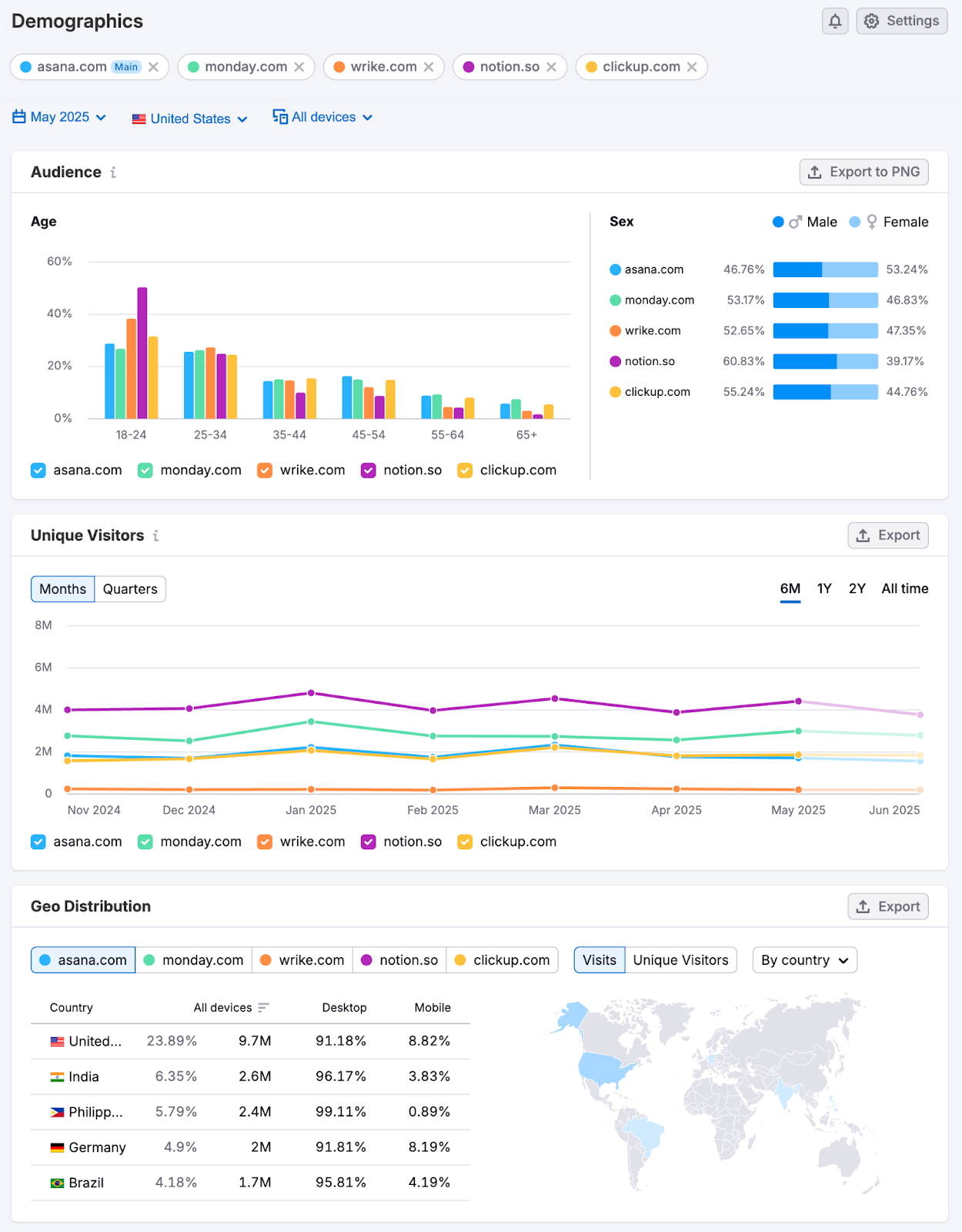
Audience Research
Learning more about prospective customers’ needs, behaviors, and preferences allows you to identify opportunities and refine your positioning to get better results.
Here are a few ways you can get more insights on your customers:
- Surveys: Run a survey to gather quantitative data on audience preferences and needs. You can survey your own customers or use platforms like Pollfish or SurveyMonkey to reach participants who fit your target audience.
- Interviews: Perform one-on-one interviews with existing customers to dive deeper into pain points, motivations, and their decision-making process. Just be aware that your current customers don’t necessarily reflect your target audience.
- Third-party reports: Analyze relevant industry reports from companies like Gartner and Pew Research to get insights into broader trends and behavioral and market shifts
- Review mining: Read through customer reviews for your own and competing products to learn what customers like and dislike about existing solutions
- Audience research software: Use tools like One2Target and Audience Intelligence to learn more about your target customers, including where they spend their time online, which brands they buy from, and more.
This research might reveal that target customers for your SaaS product highly value integrations with their existing tech stack.
You could then prioritize messaging that speaks to your software’s integration capabilities, which might allow you to convert visitors into customers more easily.
Social Media Activity
Your competitors’ social media activity is a source of valuable competitive data that can help you understand what your audience responds to and allow you to improve your own social media strategy.
Use Social Tracker (part of Semrush Social) to track the total follower count and engagement numbers for each competitor.
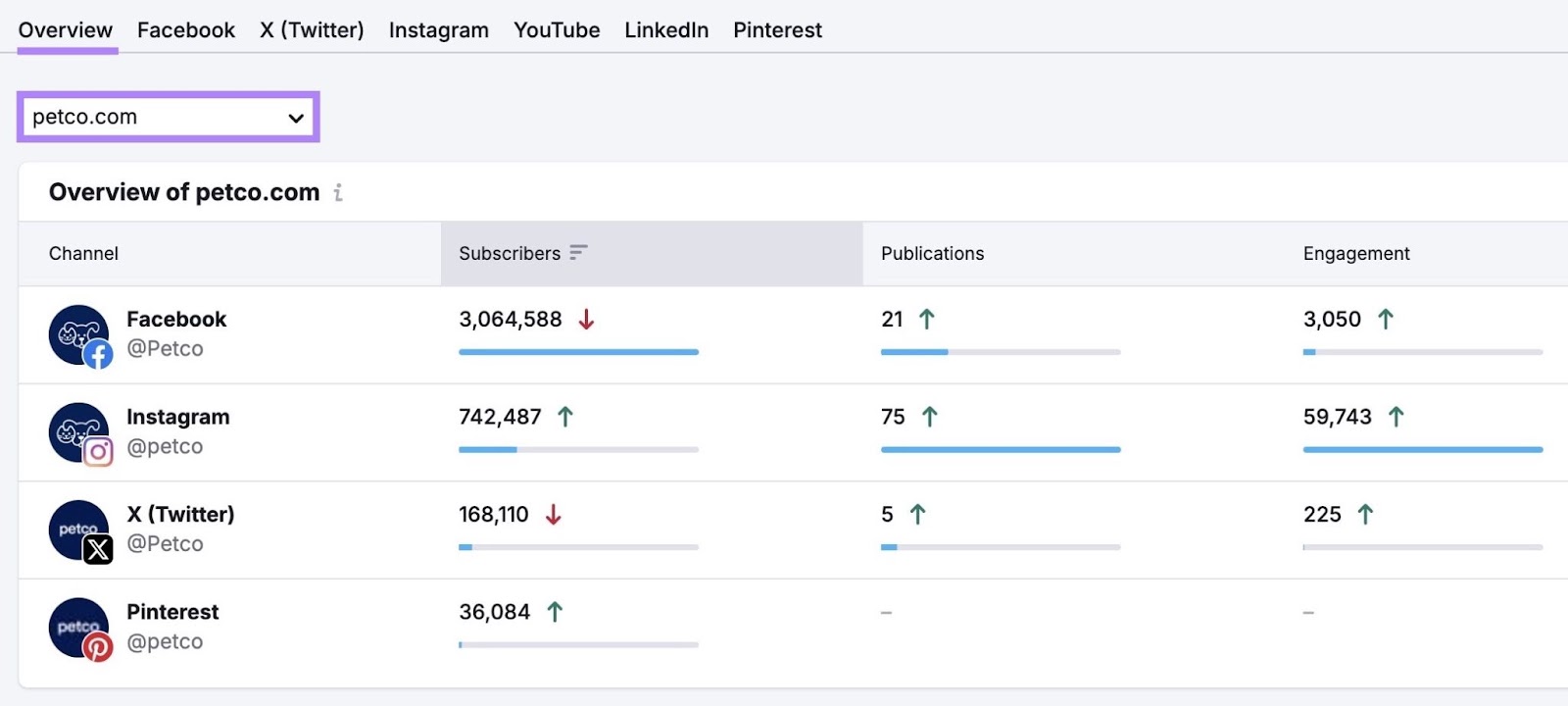
Then, dive into competitors’ individual social posts across Facebook, X, Instagram, YouTube, LinkedIn, and Pinterest. And see engagement numbers for each.
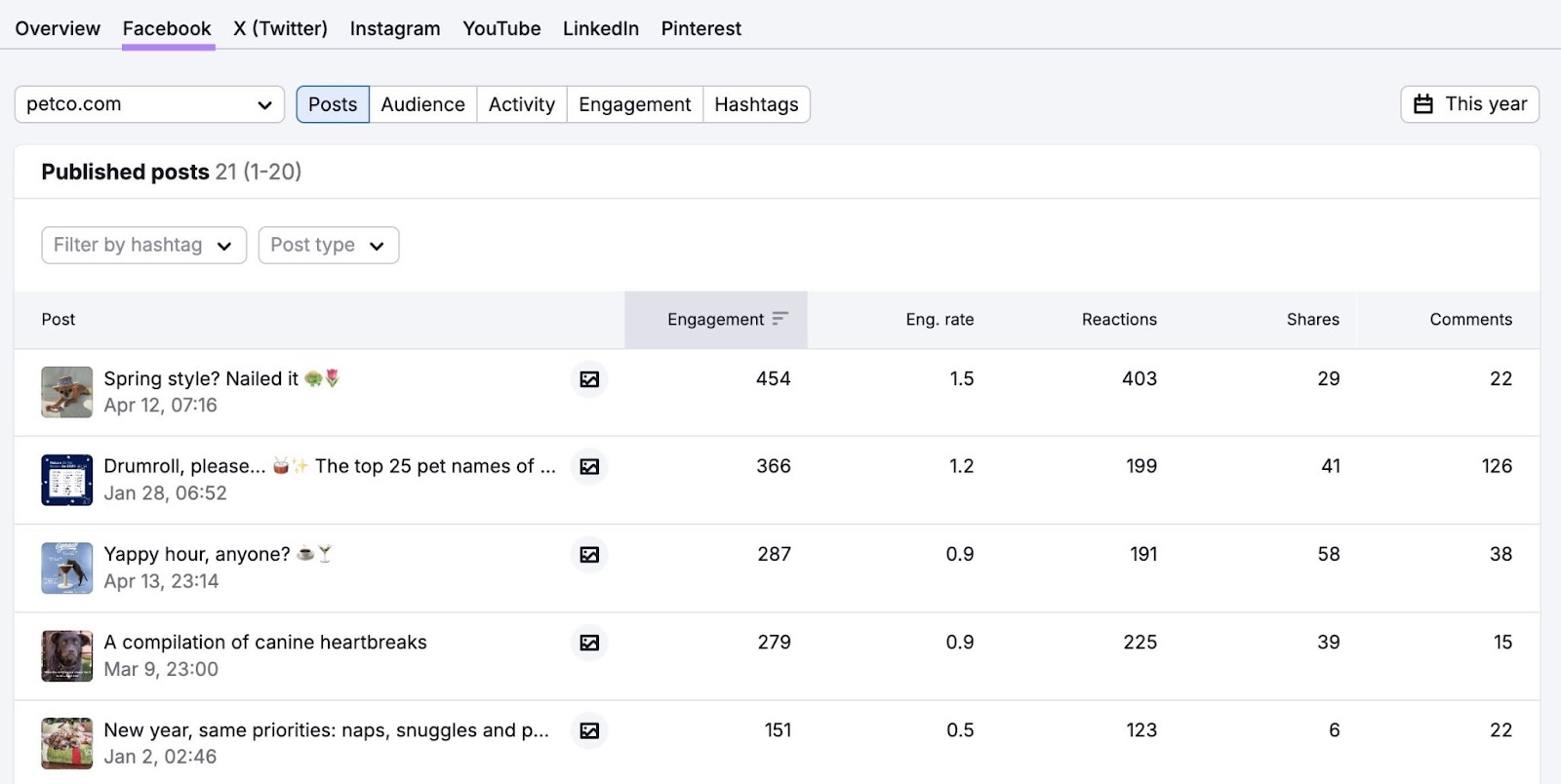
Ad Strategy
Analyzing your competitors’ ad strategies can help you understand how they attract and convert customers through paid ads. And what messaging, offers, and ad platforms are worth investing in.
Semrush’s Advertising Research tool is great for studying what your rivals are doing with their search ads.
Just enter a competitor’s domain and click “Search.”

At the top of the “Positions” report, you’ll be able to see the total number of keywords they’re bidding on, how much traffic they’re generating from paid ads, and how much it’s costing them.
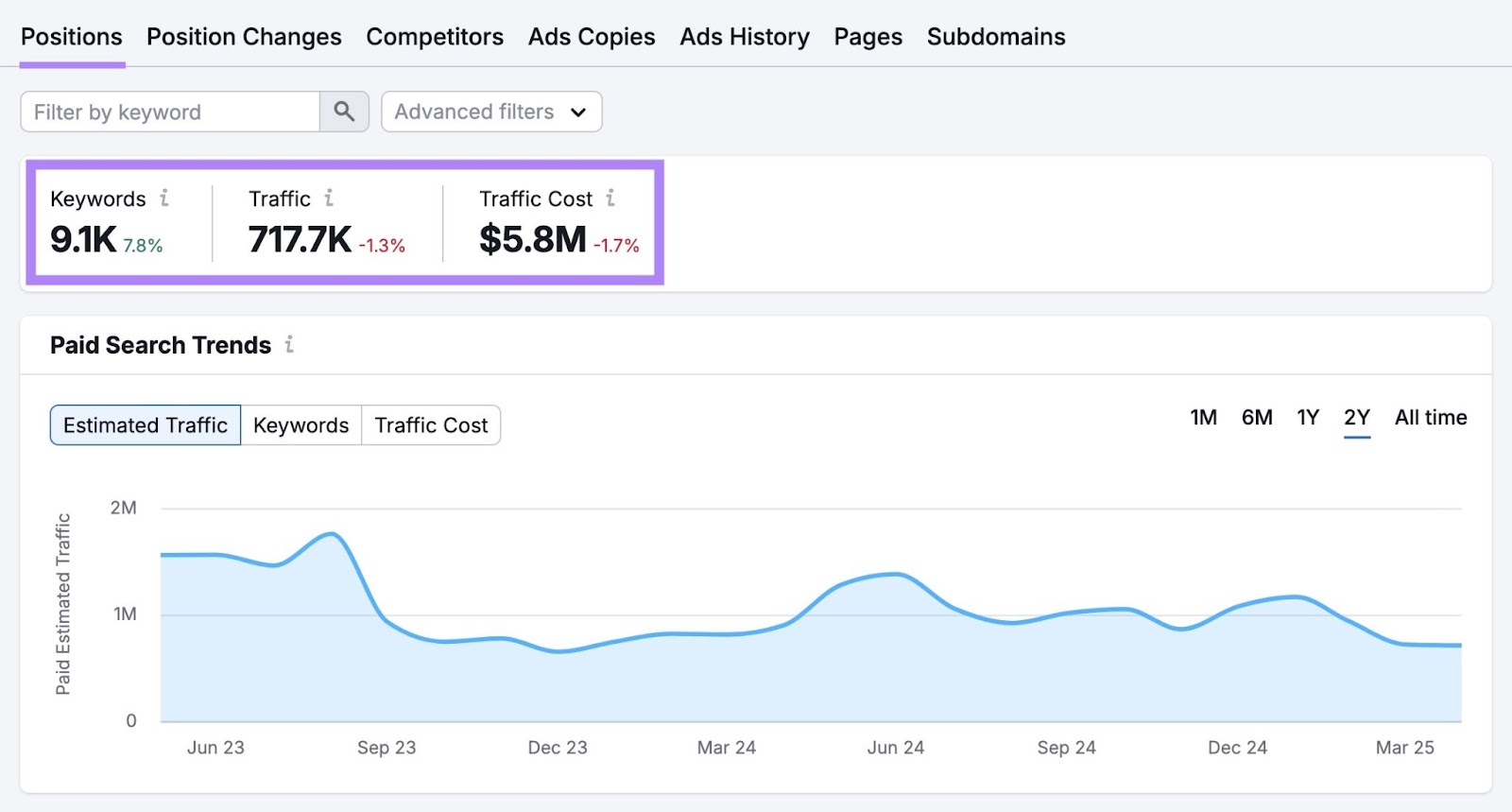
Scroll down to the “Paid Search Positions” section to see the exact keywords they’re bidding on.
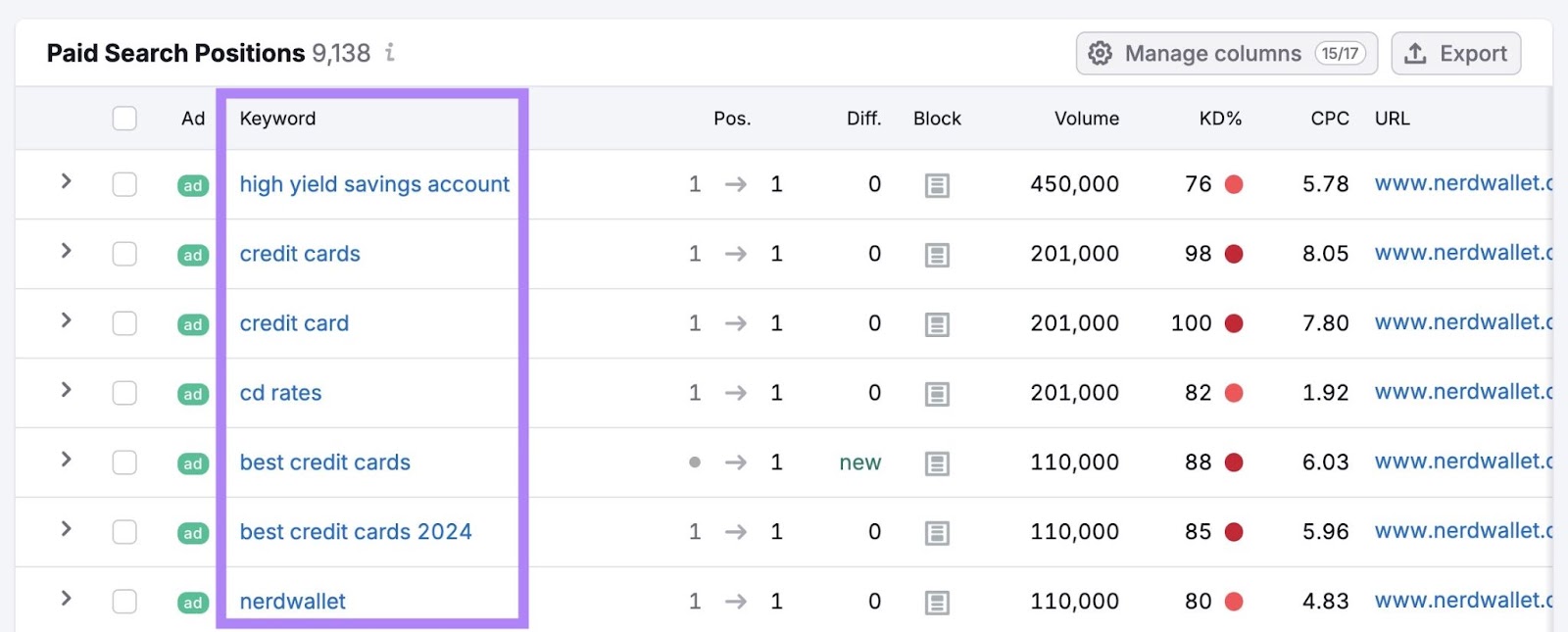
And visit the “Ads Copies” tab to see the exact ad copy they’re using for their ads.
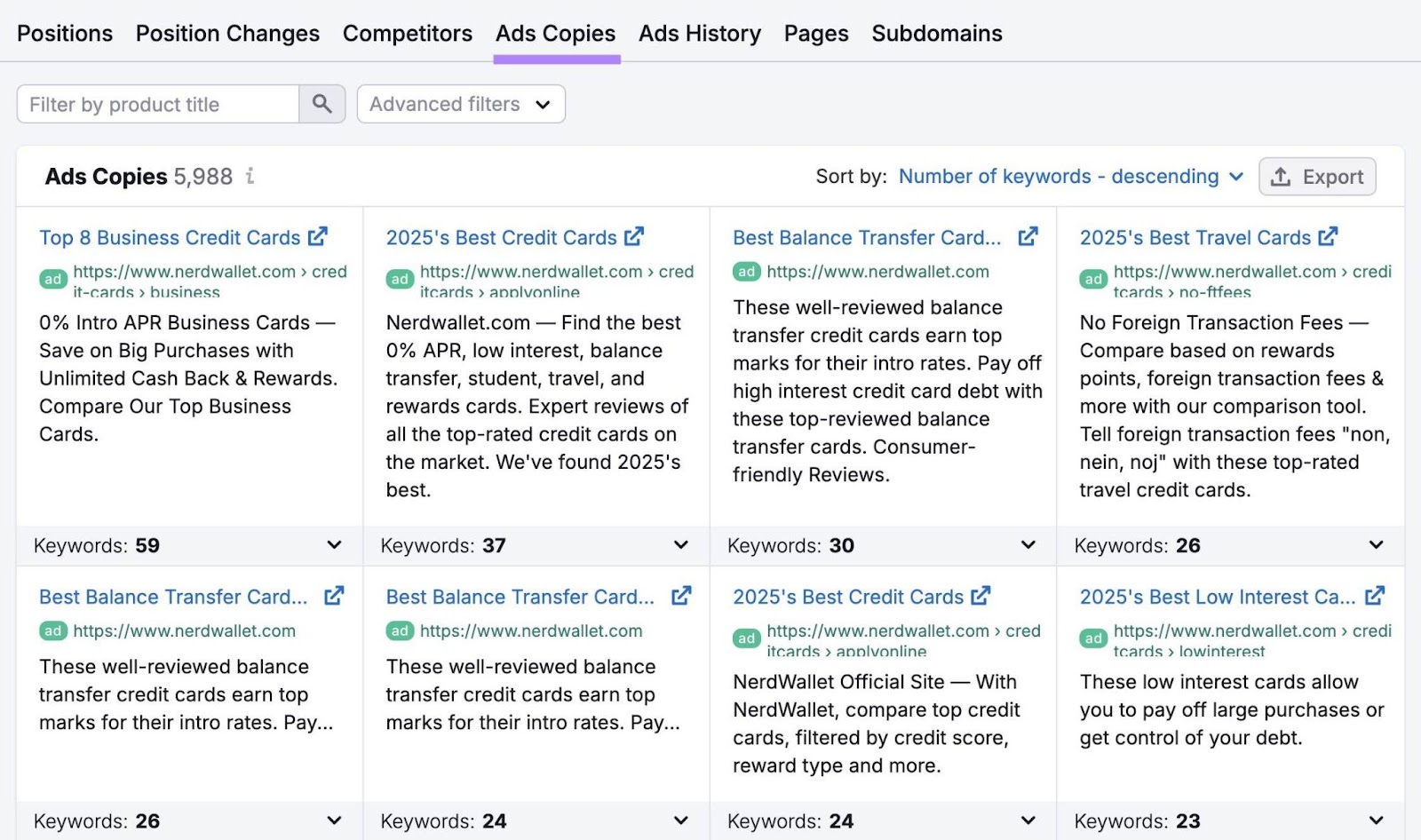
3. Organize and Analyze the Data
Now that you’ve gathered the data, it’s time to organize and make sense of it.
Collect all the data in a spreadsheet or document that allows you to analyze competitive insights side by side.
To make things easier, you might want to create specific categories for things like positioning, pricing and packaging, traffic sources, and audience demographics.
When analyzing the data, look for:
- Patterns: Do you see multiple competitors leaning heavily on the same traffic source or targeting the same keywords?
- Gaps: Have you noticed an underused traffic channel no one seems to be addressing (e.g., by analyzing a Traffic Analytics report)?
- Strategic shifts: Are there any signs that a competitor might be changing their strategy (e.g., updated website messaging)?
You’ll also want to benchmark how you’re doing against the competition to find your strengths and areas for improvement.
For example, you might identify that competitors are getting a large share of their website traffic through paid advertising, while you’ve barely experimented with ads.
This might signal that there’s an opportunity for you to invest more into paid advertising campaigns. Or at least investigate whether paid ads could be a viable growth channel for your business.
4. Use the Insights to Shape Your Strategy
Using your findings to make changes to your strategy can help you achieve better results.
For example, maybe you’ve discovered that multiple competitors are investing heavily in Google Ads and putting a heavy emphasis on affordability in their messaging.
But you’ve also learned that a growing segment of customers is more focused on saving time as opposed to saving money.
Based on these findings, you might decide not to compete on price. But rather to change your positioning and messaging to focus on speed and convenience. And shift your budget toward channels like SEO and email marketing that let you capture demand more affordably.
5. Keep Tracking Data & Be Ready to Adapt
Competitive intelligence is an ongoing process. Things change all the time, and you need to be paying close attention and be ready to respond to shifts in the market.
Here are a few ways you can build competitive intelligence into your workflow:
- Set up alerts for competitor brand mentions on social media and in the news
- Monitor competitors’ websites for changes in messaging and pricing
- Subscribe to industry publications and keep an eye out for technological improvements and regulatory changes that might impact the market
- Use customer surveys, interviews, and social listening tools to stay on top of changing customer behaviors and needs
Stay Competitive By Using Professional Tools
By consistently gathering and acting on competitive intelligence, you’ll be equipped to make smarter, more strategic decisions to grow your business and succeed in the market.
Semrush’s .Trends suite of tools can help you stay on top of it all.
You can use it to learn more about the overall competitive landscape, identify competitors’ top traffic channels, monitor competing websites, and more—all in one place.